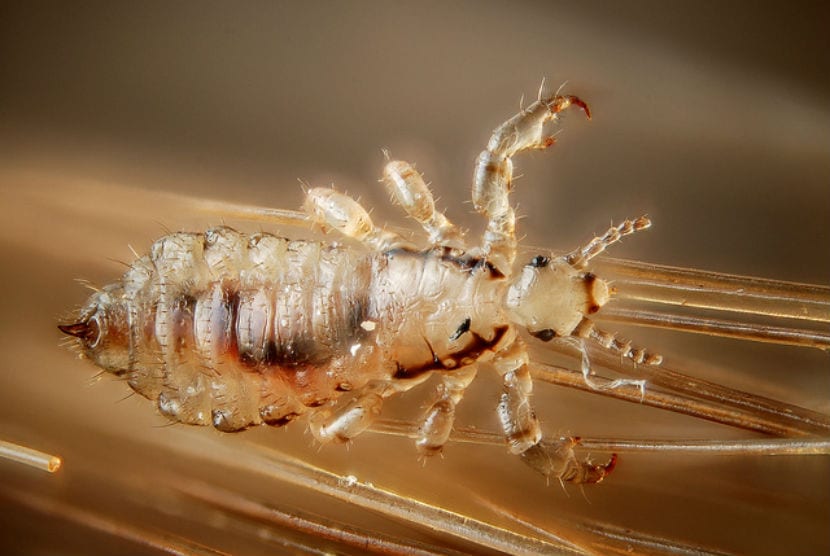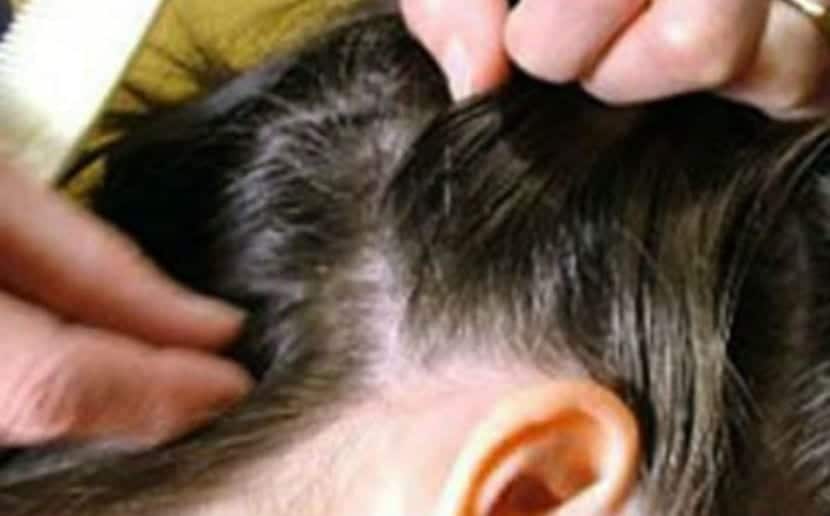
One day you go to pick up your children after school and another mother says to you in horror:you know there are lice at school? ... and panic breaks out.
What to do in this case? Why do the hated critters return to the heads of our offspring every few months? Let's try to clarify it
The lice
Lice are almost as old as humans. The oldest traces on record were found in the Judean desert and date back to the years 6900-6300 BC. No one has been saved from them, not the mummies of Egypt or the inhabitants of Pompeii.
Although there are many kinds of lice, about 3000, the ones that really interest us are human head lice.
They are typical of the human being
Head lice are parasitic insects unique to humans. They do not infest other species, or animals. They also do not transmit any disease.
They have six legs with which they are attached to the roots of the hair and outside of our head they barely live two days. They need the heat that we provide them and suck the blood of the human being several times a day to live.
Once they reach the proper head they lay their eggs, the nits. They always place them near the root of the hair to take advantage of the heat of our head. The females stick the nits to the hair with a substance that is not soluble with almost anything, so they do not fall off by more jumps that our children give or by more than combing their hair.
It takes 8-10 days for the louse to hatch from its egg and another 10 days to become an adult louse and be able to reproduce. And to put a lot of nits ...
They can live up to 50 days head to head, feeding on human blood ...But if they fall out of our heads, they only survive for a couple of days.

How they are transmitted
The louse does not fly or jump, but it has a great capacity to transmit from one person to another.
Direct head-to-head contact or exchanging caps, hats, headbands… etc is the way that the louse is transmitted between human beings. Lice are really quick to go from hair to hair when hair is dry.
The biggest candidates for this infestation are school-age children. Girls tend to be more infected than boys.
The length of the hair does not influence how easy it is for lice to live on the child's head, in general they prefer clean hair to dirty hair and straight hair to curly hair.
Girls are probably more contagious because they tend to have quieter games, in which heads are kept very close to each other and the louse roams to respect them.
When a louse enters a classroom, few are saved from contagion.
How we detect them
The symptom that leads us to think that the child is infested is itching. The child scratches tirelessly. But we cannot be trusted, there are only 20% of people who suffer from this symptom and When itching appears, the louse has been on our head for several weeks ...
It is best to inspect our little ones' heads on a regular basis. Seeing a live louse is not easy, they move at high speed through dry hair, but with wet hair they are much less agile. It is a good idea to run the nit through damp hair after washing your head.
Place a white towel on the child's shoulders. It will be easier to distinguish the lice when you remove them.
What do they look like?
It is important to know the shape and appearance of both lice and nits, check the hair in good light, better natural, but if that is not possible, use a powerful focus. Look first in the area of the neck and behind the ears, which are the places where these critters usually camp.
Although nits look a bit like dandruff, dandruff sloughs off the hair without problems, but the nit does not separate from the hair unless you grip it firmly and pull it hard.
Now the grandmother's trick, when the nit is alive, if you press it with your fingernail against the sink you will hear a click, Although it is a bit unpleasant, it is a good way to confirm that what we have plucked from the hair of our offspring is a nit and nothing else.
Use the nit
Run the nit through all the hair, from the roots to the ends, keep in mind that live nits will be attached to the head just like lice. Divide the hair into portions and do not leave any without combing several times.
If we do not find live lice or nits we must not lower our guard, Periodically checking the heads of the little ones in the house ensures that we realize the possible infestation before it is too late and we have to use the grandmother's method, shaving one.
If we find live lice or nits, it is necessary to do the eradication treatment.

Treatments
We have many pediculicidal lotions and shampoos on the market. Neither is considered 100% effective, so it will be necessary to repeat the treatment and combine it with the use of the nit.
It is a good idea to "quarantine" hats, headbands, caps, etc. of the child, remember that lice only live two days outside the human head. Wash brushes and combs well, which, in addition, must be for your exclusive use.
Of course it is not necessary for the child to stop going to school. You can do the treatment in the afternoon and the child will not miss classes.
After removing the lice completely you can use a repellent, there are some quite effective.
Phew! Oh my! the lice have fried me: I have used pediculicides without permethrin, natural remedies, warm oil to better remove the nits, and the only thing that keeps them at bay (and still ...) is the daily border pass, which is heavy but go .
I was lucky that they did not enter the house until the little girl was 8 and a half years old, but now there is no way. I will read the post well 🙂, thanks Nati.
I understand you Macarena. It happened to me with my little daughter and it became a total despair ... There is no choice but to pass the nit every time they wash their heads. Thank you very much for your comment.
All the best
LICE! NOOOOO. Tired of using all kinds of products and ruining my daughter's head. It was impossible to kill them, over and over and over again and it didn't kill them. I found a specialized lice and nit removal center. It's called HELP! LICE. Thanks to them I was able to put an end to my daughter's problem since it was impossible for me. I recommend it to everyone and they also do not use any chemicals. Thanks for your post
It's true Maria. A very good option is mechanical disinsection. In fact, more and more businesses are doing it. At home it is not easy and the only thing we can do afterwards is to be vigilant to remedy as soon as we see the first nit, without waiting for it to reach adults.
Thanks for your comment. a greeting